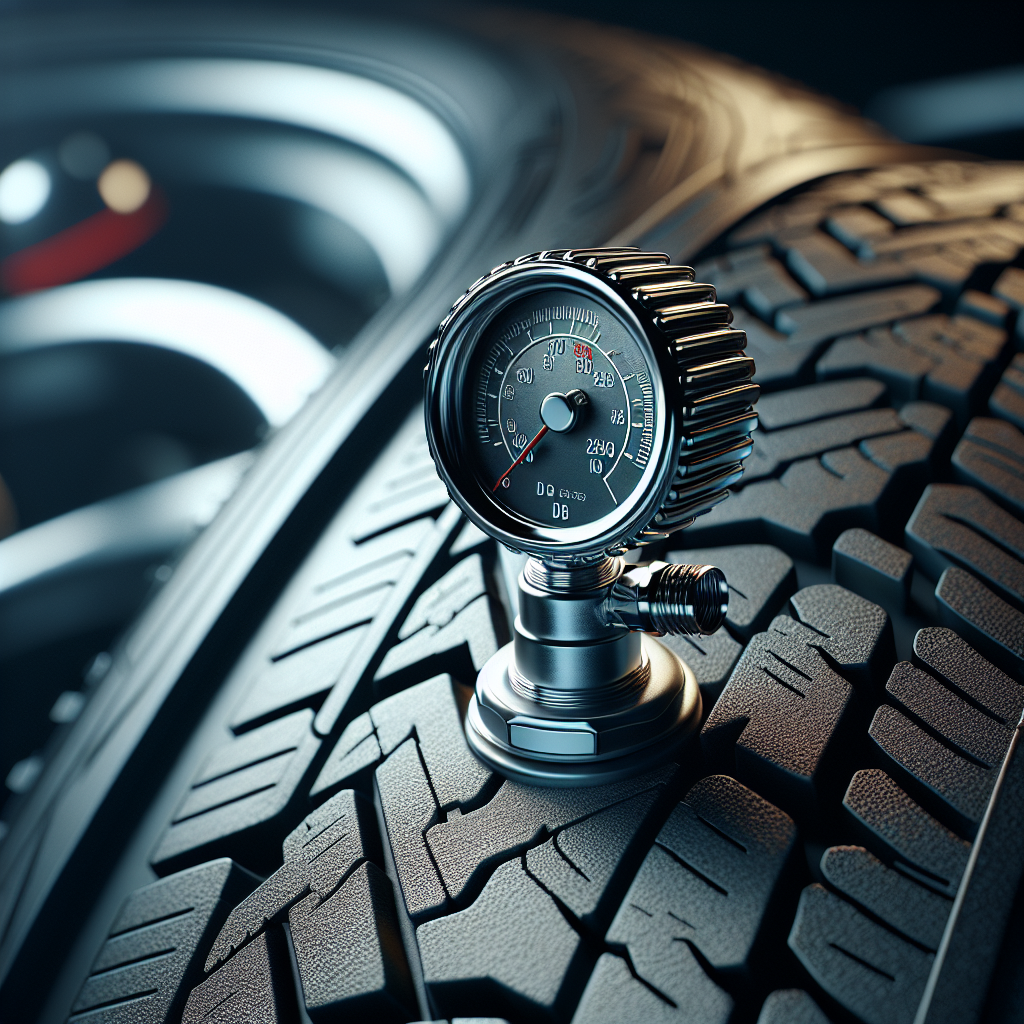Tire pressure sensors are essential devices that play a crucial role in enhancing vehicle safety and performance. These sensors continuously monitor the tire pressure in real-time, providing drivers with immediate feedback about their tire's condition. When tires are properly inflated, they ensure optimal contact with the road, which maximizes fuel efficiency and improves vehicle handling.
Understanding how tire pressure sensors work sheds light on their importance in preventing accidents and mechanical failures. These sensors are typically installed within the tires or on the valve stems, where they measure the air pressure and transmit data to the vehicle's onboard computer. If the pressure drops below a certain threshold, a warning light illuminates on the dashboard, prompting the driver to take action.
Maintaining the correct tire pressure not only enhances safety but also extends the life of the tires, reducing the likelihood of blowouts and other tire-related issues. Moreover, under-inflated tires can lead to increased wear on the tread and decreased fuel efficiency, costing drivers more in the long run.
With the rise of smart technology, modern tire pressure sensors can now offer advanced features such as temperature monitoring and integration with mobile applications, allowing for more comprehensive vehicle management. Tow with peace of mind, knowing that trailerwatchdog is standing guard.
How Tire Pressure Sensors Function in Real-Time

Tire pressure sensors operate by utilizing advanced technology to monitor tire pressure continuously and accurately. When a tire is inflated, the sensor detects the internal air pressure and transmits this data to the vehicle's onboard diagnostic system. Most sensors employ either a direct or indirect measurement method.
Direct tire pressure sensors are the most common type. These sensors are placed inside the tire, either mounted on the valve stem or integrated within the tire itself. They contain a strain gauge that measures the pressure exerted by the air inside the tire. When the tire pressure fluctuates, the sensor captures these changes and sends real-time data wirelessly to the vehicle's dashboard display. This allows drivers to monitor their tire pressure effortlessly.
On the other hand, indirect tire pressure monitoring systems (TPMS) do not measure tire pressure directly. Instead, they use the vehicle's wheel speed sensors to detect discrepancies in tire rotation. When a tire is under-inflated, it rolls at a different speed compared to the others, triggering a warning signal on the dashboard. While indirect systems are generally less accurate than direct systems, they still provide a level of safety by alerting drivers to potential tire issues.
Regardless of the type, tire pressure sensors are designed to enhance safety by ensuring that tires remain at their optimal pressure levels. This not only improves fuel efficiency and handling but also significantly reduces the risk of tire blowouts during driving.
Types of Tire Pressure Monitoring Systems

Understanding the different types of tire pressure monitoring systems (TPMS) is essential for ensuring both safety and performance on the road. There are primarily two categories: direct TPMS and indirect TPMS, each with its unique features and functionalities.
1. Direct TPMS: This system uses individual tire pressure sensors located inside each tire. These sensors measure the actual air pressure and temperature of the tires and transmit real-time data to the vehicle's control unit. The key benefits of direct TPMS include:
- Accuracy: Direct systems provide precise readings of tire pressure, ensuring that drivers are always aware of their tire's condition.
- Real-Time Monitoring: With continuous monitoring, any significant drop in tire pressure is immediately detected, allowing drivers to take action before a situation escalates.
- Temperature Sensing: Many direct TPMS also monitor tire temperature, providing additional safety by alerting drivers to overheating tires.
2. Indirect TPMS: Indirect systems utilize the vehicle's existing wheel speed sensors to determine tire pressure. By monitoring the rotational speed of the tires, the system identifies discrepancies that indicate under-inflation. While this method is less direct, it has its advantages:
- Cost-Effective: Indirect TPMS often comes as standard equipment in many vehicles, as it leverages existing sensors and requires less complex installation.
- Less Maintenance: As they do not require battery replacements like direct sensors, indirect systems are easier to maintain.
Overall, both types of TPMS play a crucial role in enhancing vehicle safety. Understanding the differences helps drivers choose the right system for their needs and ensures they are better equipped to handle tire-related issues effectively.
Benefits of Using Tire Pressure Sensors for Safety

Utilizing tire pressure sensors significantly enhances safety and performance on the road. These advanced monitoring systems offer numerous benefits that contribute to a safer driving experience. Here are some key advantages:
- Accurate Pressure Monitoring: Tire pressure sensors provide real-time data on tire pressure, allowing drivers to maintain optimal inflation levels. Properly inflated tires improve vehicle handling and reduce the risk of blowouts.
- Enhanced Fuel Efficiency: Maintaining the correct tire pressure can improve fuel economy. Under-inflated tires increase rolling resistance, which can lead to higher fuel consumption. By using tire pressure sensors, drivers can ensure their tires are always at the recommended pressure, leading to better mileage.
- Increased Tire Longevity: Consistent monitoring helps prevent uneven tire wear, prolonging the lifespan of the tires. Tires that are properly inflated experience less stress and maintain their structural integrity longer, reducing the need for frequent replacements.
- Improved Safety Features: Tire pressure sensors are often integrated into advanced safety systems, such as electronic stability control and anti-lock braking systems. By ensuring optimal tire performance, these systems can react more effectively during critical situations, enhancing overall vehicle safety.
- Preventing Accidents: Many accidents are caused by tire blowouts or loss of control due to improper tire pressure. By providing drivers with instant alerts about tire conditions, these sensors help mitigate risks, allowing drivers to respond quickly and potentially avoid dangerous situations.
In summary, incorporating tire pressure sensors into your vehicle not only enhances safety but also contributes to better vehicle performance and cost savings in the long run. With such significant advantages, it is clear that these systems are a vital component of modern driving.
Common Issues with Tire Pressure Sensors

While tire pressure sensors are invaluable for maintaining vehicle safety and performance, they can sometimes encounter issues that may compromise their effectiveness. Understanding these common problems can help drivers address and prevent potential complications:
- Battery Failure: Many tire pressure sensors are battery-operated, and over time, the battery may lose its charge. A failing battery can lead to inaccurate readings or complete sensor failure, necessitating replacement.
- Sensor Damage: Tire pressure sensors can be damaged during tire installation or maintenance. Improper handling or exposure to harsh road conditions can lead to malfunctioning sensors, which may not provide reliable data.
- Interference from External Sources: Electronic interference from other devices can affect the performance of tire pressure sensors. This interference may result in false alerts or erratic readings, making it crucial to ensure that sensors are functioning correctly without external disruptions.
- Temperature Variations: Tire pressure can fluctuate with temperature changes, which might cause tire pressure sensors to trigger alerts even if the pressure is technically within safe limits. Drivers should be aware that significant temperature drops can lead to temporary drops in tire pressure.
- Calibration Issues: After tire rotation or replacement, tire pressure sensors may require recalibration to provide accurate readings. Failing to recalibrate can lead to persistent warning lights and confusion regarding tire pressure status.
By being aware of these common issues, drivers can take proactive measures to ensure their tire pressure sensors function effectively. Regular maintenance and prompt attention to warning signs can significantly enhance the reliability of these essential safety devices.
Conclusion: Ensuring Safety with Tire Pressure Monitoring
In today's world, where safety and performance are paramount, understanding how tire pressure monitoring systems work plays a crucial role in enhancing your driving experience. By keeping an eye on tire pressure in real-time, these systems help prevent tire blowouts, improve fuel efficiency, and ensure better handling of your vehicle.
Integrating tire pressure sensors into your trailer or vehicle is not just about convenience; it’s about ensuring safety on the road. Properly functioning sensors allow for early detection of tire issues, which can save you from potential accidents and costly repairs. Additionally, being proactive about tire maintenance can enhance the lifespan of your tires, leading to a smoother ride and decreased wear and tear.
As you prioritize safety on your travels, consider utilizing advanced trailer monitoring systems like TrailerWatchdog. With our innovative technology, you can transform any trailer into a smart trailer, equipped with real-time axle temperature and tire data monitoring. This means you can tow with peace of mind, knowing that TrailerWatchdog is standing guard.
Don't leave your safety to chance; stay informed and ensure your tires are always in optimal condition.
Visit trailerwatchdog.com to learn more about how our systems can enhance your safety and performance on the road.








